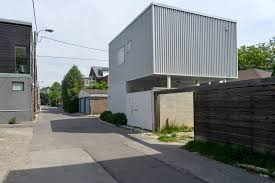A Kaleidoscope of Summer Fun
Tuesday, July 31st, 2018Summer in the GTA is all about enjoying outdoor events and activities. From al fresco patios and window shopping to biking trails and evening strolls, the warm weather prompts us to move outside for three or four months each year.
Is it any wonder that the GTA is home to such a wide assortment of open-air events, festivals and activities? Let take a look at some:
Lights, Camera, Action – You don’t need to be a movie nerd to enjoy these celebrations dedicated to cinema. The Open Roof festival runs each Wednesday until August 22 and celebrates independent film and music. Located at Castlepoint Numa on Stirling Road in the Lower Junction, tickets are $15.
The Christie Pits Film Festival goes until August 19 and showcases unusual depictions of cities and their residents from around the world. Screenings begin at sundown and a suggested donation of $10 is requested. Films will be shown on August 5, 12, 18 & 19.

The Mulan International Film Festival runs from August 10 to 17 and showcases Chinese-language films. Tickets are $15 and the films are screened at the Isabel Bader Theatre on Charles St. W.
Have Your Fill – This is a great city if you enjoy food, even greater if you appreciate foods from around the globe. And the food festivals are there to show it. Here goes:
- 3 to 6 is The Toronto Food Truck Festival at Woodbine Park
- 3 to 6 is Scarborough Ribfest at Thomson Memorial Park
- 4 is Taste of the Middle East Food Festival at Yonge-Dundas Square
- 5 is Taste of India Food Festival at Nathan Phillips Square
- 9 to 12 is Grace JerkFest at Centennial Park
- 10 to 12 is Pickering Food Truck Festival at The Esplanade N
- 10 to 12 is Waterfront Night Market, a Pan-Asian food and lifestyle festival at Ontario Place
- 10 to 12 is Taste of the Danforth on Danforth near Pape Ave.
- 10 to 11 is Feast of St. Lawrence at St. Lawrence Market
- 11 to 12 is Toronto Vegandale Food Drink Festival at Garrison Common
- 11 to 12 is Sweetery Toronto Food Festival at David Pecaut Square
- 11 is the Richmond Hill Craft Beer Festival in support of Rotary at the Richmond Hill Centre for the Performing Arts
- 17 to 19 is the Oshawa Rotary Ribfest at Lakeview Park
- 18 to 19 is Richmond Hill Food Truck Festival at Richmond Green
- 18 to 19 is the Markham Craft Beer & Wine Festival at Markham Fairgrounds
- 24 to 25 is The Toronto Cider Festival at Sherbourne Common
- 24 to 26 is Beer, Bourbon & BBQ at Ontario Place
- 25 to 26 is the Panamerican Food & Music Festival at Yonge-Dundas Square
- 25 to 26 is the Japan Festival Canada at Mississauga Celebration Square
- 31 to Sept. 3 is The Mac + Cheese Festival at Woodbine Park
- 31 to Sept. 3 is the Hispanic Fiesta at Mel Lastman Square
Entertainment, Arts & Culture – If music, dance, arts and culture are more your thing there is plenty on tap:
The Toronto Summer Music Festival runs until Aug. 4 at Koerner Hall, while the Toronto International Youth Dance Festival is at Nathan Phillips Square from Aug. 3 to the 4th. You can soak up Caribbean music at Island Soul at Harbourfront Centre from Aug. 3 to 6. From Aug. 10 to 12th catch Habari Africa, a festival celebrating the sights and sounds of African culture, at Harbourfront Centre. The TD Markham Jazz Festival goes from Aug. 17 to 19 on Main Street, Unionville in Markham. Try the Small World Music Festival at Harbourfront Centre from Aug. 17 to 19. How about the Festival of South Asia on Gerrard Street East near Coxwell or the Chinatown Festival, both on Aug. 18 and 19th? The Korean Harvest Fest is at Mel Lastman Square Aug. 24 to 26, while Tamil Fest is being held in Scarborough on Markham Road on Aug. 25 and 26. Don’t forget the Ashkenaz Festival at Harbourfront Centre Aug. 28 to Sept. 3 or the International Buskerfest for Epilepsy at Woodbine Park on the same dates.



